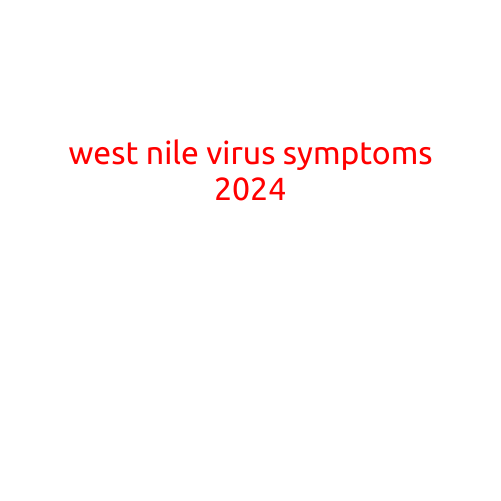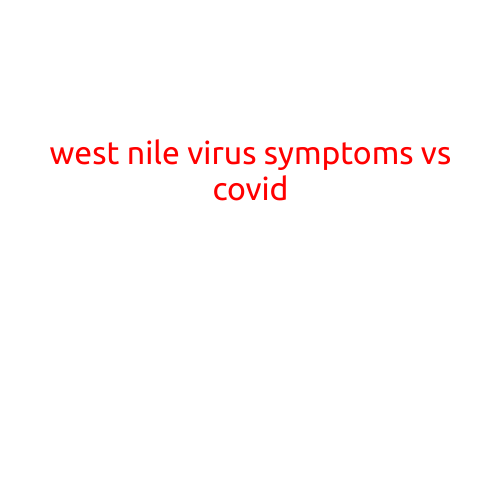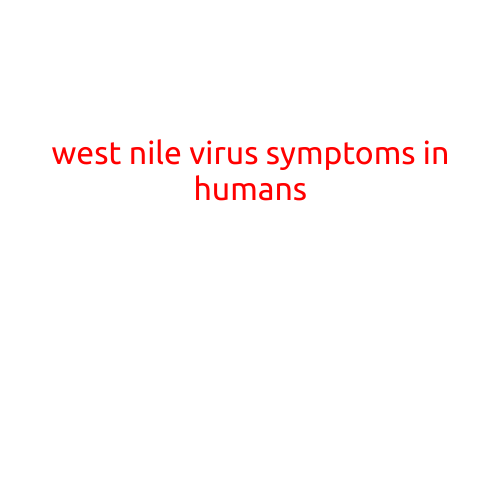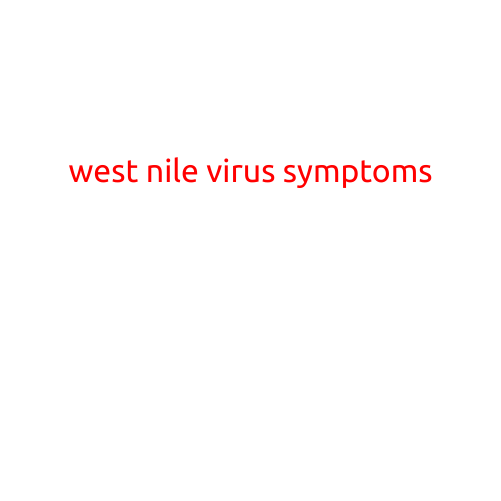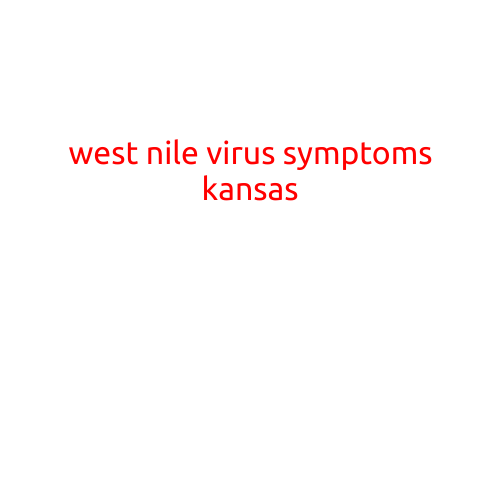
West Nile Virus Symptoms in Kansas: What You Need to Know
As the summer months approach, Kansas residents are reminded to take precautions against West Nile virus (WNV), a common mosquito-borne illness that can have serious consequences. According to the Kansas Department of Health and Environment (KDHE), West Nile virus is a significant public health threat in the state, and understanding its symptoms is crucial for prompt diagnosis and treatment.
What is West Nile Virus?
West Nile virus is a flavivirus that is transmitted to humans through the bite of an infected mosquito. In Kansas, the primary vector of the virus is the Culex mosquito, which is common in urban and rural areas. The virus is not spread from person to person or through direct contact with infected animals.
Common Symptoms of West Nile Virus
The symptoms of West Nile virus are usually mild and may include:
- Fever: A high temperature, often accompanied by chills and body aches.
- Headache: A severe headache, often described as a migraine-like pain.
- Body Aches: Soreness and stiffness in the muscles, joints, and back.
- Rash: A maculopapular rash, which is a flat, pink to red rash on the skin.
- Fatigue: Extreme tiredness and exhaustion.
Severe Symptoms of West Nile Virus
In some cases, WNV can cause severe symptoms, which require immediate medical attention. These severe symptoms include:
- Meningitis: Inflammation of the lining around the brain and spinal cord.
- Encephalitis: Inflammation of the brain, which can lead to seizures, coma, and even death.
- Acute Flaccid Paralysis: A rare but serious symptom characterized by rapid onset of muscle weakness and paralysis.
Diagnosis and Treatment
West Nile virus is typically diagnosed through a combination of clinical evaluation, laboratory tests, and imaging studies. Treatment is focused on managing symptoms, relieving pain, and preventing complications.
Prevention is Key
Preventing WNV is a proactive approach that involves taking simple steps to reduce mosquito breeding and prevent bites:
- Wear Insect Repellent: Use DEET-based insect repellent or picaridin on exposed skin and clothing.
- Wear Protective Clothing: Wear long-sleeved shirts, long pants, and socks when outdoors, especially during peak mosquito hours (dawn and dusk).
- Eliminate Breeding Sites: Remove standing water around homes and yards, as mosquitoes need water to breed.
- Install Yellow Lights: Replace outdoor lighting with yellow or sodium-vapor lights, which are less attractive to mosquitoes.
Conclusion
West Nile virus is a significant public health threat in Kansas, and understanding its symptoms is crucial for prompt diagnosis and treatment. By taking preventive measures and seeking medical attention if symptoms arise, Kansas residents can reduce the risk of infection and enjoy a healthy summer.
If you experience any symptoms of West Nile virus, seek medical attention immediately. For more information on WNV, visit the Kansas Department of Health and Environment website or consult your healthcare provider.
